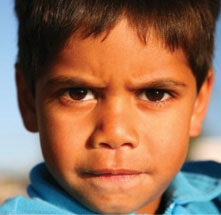PC News - May 2015
Expenditure on services for Aboriginal and Torres Strait Islander Australians
Estimates in the latest Indigenous Expenditure Report contribute to the information available to policy makers attempting to address the gap in outcomes between Aboriginal and Torres Strait Islander and other Australians.
Download this article
The 2014 Indigenous Expenditure Report is the third in a series of biennial reports, commissioned by the Council of Australian Governments (COAG) to provide information about the levels and patterns of government expenditure on services to Aboriginal and Torres Strait Islander Australians. The Report provides estimates of government expenditure nationally and by state and territory for 2008-09, 2010-11 and 2012-13.
While the report does not assess the adequacy or effectiveness of government expenditure, the estimates contribute to the evidence base that policy makers need to gain a clearer picture of the efficiency of government services provided to Aboriginal and Torres Strait Islander Australians.
Indigenous expenditure reporting
The 2014 Indigenous Expenditure Report was produced by the Productivity Commission for the Steering Committee for the Review of Government Service Provision.
The Indigenous Expenditure Report complements other Review of Government Service Provision publications, such as the Overcoming Indigenous Disadvantage report, which provides information about the wellbeing of Aboriginal and Torres Strait Islander Australians, and the Report on Government Services Indigenous Compendium, which collates available information on the performance of mainstream services provided to Aboriginal and Torres Strait Islander Australians. These reports, together with COAG reporting on the National Indigenous Reform Agreement and associated National Partnerships, help governments at all levels better assess the effectiveness of their expenditure on Aboriginal and Torres Strait Islander Australians.
Estimating government expenditure on services for Aboriginal and Torres Strait Islander Australians is a complex task and will be subject to continuing improvement in future reports. Several important improvements were made for the 2014 Indigenous Expenditure Report, including time series analysis, a more concise main Report and an online database allowing users to create their own custom tables from the Report's 500 000 data points.
Figure 1 Expenditure per person on selected service areas, Australia 2012-13
Australian Government plus State and Territory government direct expenditure
How will this report contribute to the reform agenda?
The 2014 Indigenous Expenditure Report provides estimates of expenditure across key service areas — education; justice; health; housing; community services; and employment — that are aligned to the seven National Indigenous Reform Agreement building blocks. The estimates in this report can help answer key questions, such as:

- How much did government spend on key services?
- How much was spent on Aboriginal and Torres Strait Islander Australians, and how does this compare with expenditure on other Australians?
- What were the patterns of service use by Aboriginal and Torres Strait Islander Australians, and how do these compare with service use by other Australians?
- What drove the differences in expenditure between Aboriginal and Torres Strait Islander Australians and other Australians?
When combined with data from other sources, the estimates in this report can contribute to a better understanding of the adequacy, effectiveness and efficiency of government expenditure on services for Aboriginal and Torres Strait Islander Australians.
Figure 1 shows expenditure across a selection of service areas. The highest expenditure per person1 for both Aboriginal and Torres Strait Islander and non-Indigenous Australians was in social security.
Changes in expenditure for Aboriginal and Torres Strait Islander Australians from 2008-09 to 2012-13 varied across areas of expenditure (see Figure 2).
Figure 3 shows mainstream and Indigenous specific expenditure across states and territories weighted horizontally by state/territory Aboriginal and Torres Strait Islander population (the wider the column the higher the population). The area of each column is in proportion to total Indigenous expenditure in each state or territory.
Figure 2 Expenditure per person by service area, 2008-09, 2010-11, 2012-13
Australian Government plus State and Territory government direct expenditureFigure 3 Mainstream and Indigenous specific expenditure per person by state/territory, 2012-13
Australian Government plus State and Territory government direct expenditureData sources and methodology for charts: See the Indigenous Expenditure Report 2014.
2014 Indigenous Expenditure Report
- Read this report released December 2014